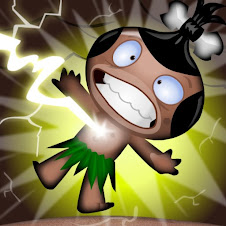
Allan here, and kicking off our new blog-post-series with something all budding-animators need to know about. Life drawing!
Really, the first thing I was interested in as a kid was drawing. As a 4 year old, I drew on paper bags, my bedroom wall, the inside of our family encyclopedias and other inappropriate places. Later, much like several of the PG fans, I would draw comics with my brother and sister to amuse ourselves. As persistent as this habit was throughout my childhood, I didn't really take it overly seriously until I went to film school and realized I was more interested in the animation program than the live action. Only one problem. I discovered that, in their eyes, I didn't draw too well. I wasn't horrible, and drew cartoons passably, but I couldn't draw anything realistic to save my life. Now I wasn't interested in drawing realistically, but it seemed to be required in order to be accepted into the animation department. Before I got in, the head of the department told me to step up my drawing habit, take some classes, and of utmost importance, attend LIFE DRAWING workshops.
Life drawing is basically drawing PEOPLE (although it also pertains to drawing animals and even plants). Various classes and workshops get models to pose, and you draw them. This was a new concept to me, but found a flyer for a workshop in the school. I went to my first session, and to my surprise, the woman we were supposed to draw TOOK OFF HER CLOTHES. I was 19 or 20 and this was a brand new experience. I hadn't realized the art world was so WEIRD! Once I got past this, the next surprise was that in this class, we were doing something called "gesture" drawing, and only allowed very short amounts of time to draw each pose. I very was slow at first...so before I even got something down, the model changed position! Some lasted 30 seconds, some 1 minute, some 5 minutes and we were only required to capture the "gesture" of the pose. And then the model would change pose and we were supposed to abandon the drawing and move on! The standard tools were a block of charcoal and a large cheap brown pad of paper. The objective was to loosen up, squiggle the basic idea of the pose in order to get the feel of the human body, but not labor over details. These drawings were also supposed to contain a "line of action". This line is an imaginary arc that represents the natural curve of the human body and should be identified with every gesture. I watched other people scrawl things that barely looked like people but seemed to have the flow of the body position because it captured the "line of action". Some people were just amazing and would create these beautiful charcoal marks, while I seemed to make overly dark scribbles. But the class taught me a lot about loosening up. The looser you are drawing the gesture and finding the line of action, the more interesting and fluid your drawings get.
Line of action examples:
Other life-drawing classes and workshops would give more time to draw...to fill in the details. But the lesson of the quick gesture drawing teaches you to lay down the flow of the body before attempting to render details like facial features or fingers.
It turned out to be my favorite type of art class to take. I never got spectacular at it but I became a lot more familiar with the human form-- how arms and legs attach to the body, what size hands should be in comparison to the head, where bones and muscles protrude, etc. For a while I became obsessed with figuring out these types of details.
So how does that translate to drawing Pygmies? Well, of course cartoon characters have their own reality and most of these details don't seem to be present in them, however if you know what you are looking for, this knowledge is in use there...mostly in the poses of the animation. A lot of video game animations look robotic or puppet-like to me. The arms and legs move independently of the body without taking into consideration it is supposed to be alive and organic. When I animate the pygmies, I use the lessons I learned in the posing of the characters. And most of all, I give them a "line of action" so the poses are more alive.

So, when anyone says they want to become a game artist, animator or illustrator, besides telling them to get a sketchbook and draw constantly, I tell them to look into life drawing classes. They're a great place to start , even if you're just curious, and really just a lot of fun. I've also found life drawing books helpful as reference. When I was at home sketching, I would refer to books to learn more about anatomy and technique.
Here's a list of some of the books I found very useful...
Dynamic Anatomy (Practical Art Books) Drawing the Human Head (Practical Art Books)
Drawing the Human Head (Practical Art Books) Drawing Dynamic Hands (Practical Art Books)
Drawing Dynamic Hands (Practical Art Books)
Anything from Burne Hogarth pretty much kicks butt. The drawings are amazing and really help you understand the shape of things like the head, hands, feet, etc. Now, for some great drawings and instruction about being looser and more dynamic, here's one I found more recently...
Force: Dynamic Life Drawing for Animators, Second Edition
Eventually, we're going to put our recommendations into our own amazon store, and anything you buy from it, we'll get a 4% commission (no extra cost to you of course!) So if you want anything we recommend and decide to buy it, why not support Pocket God in the process?


























































